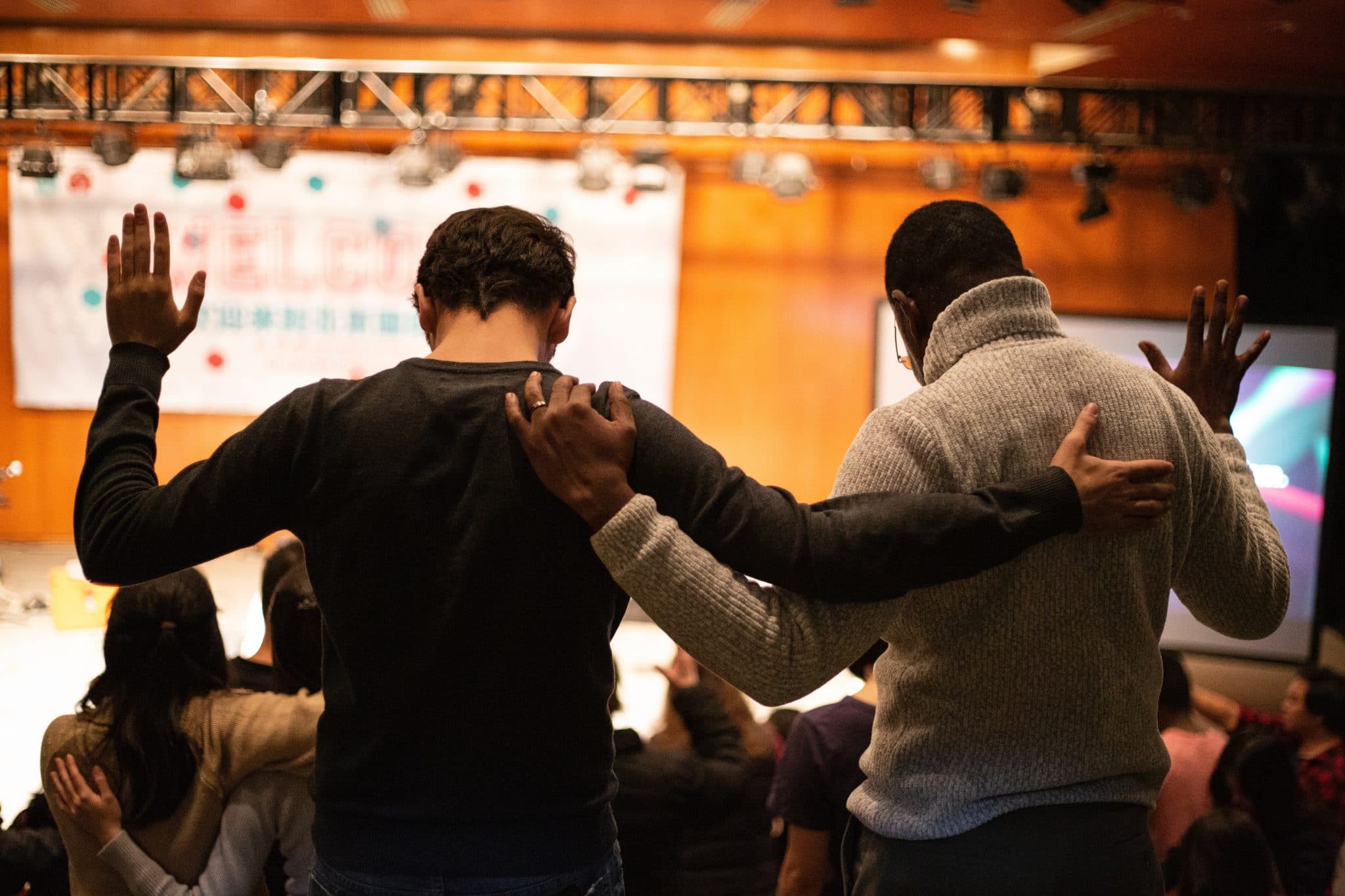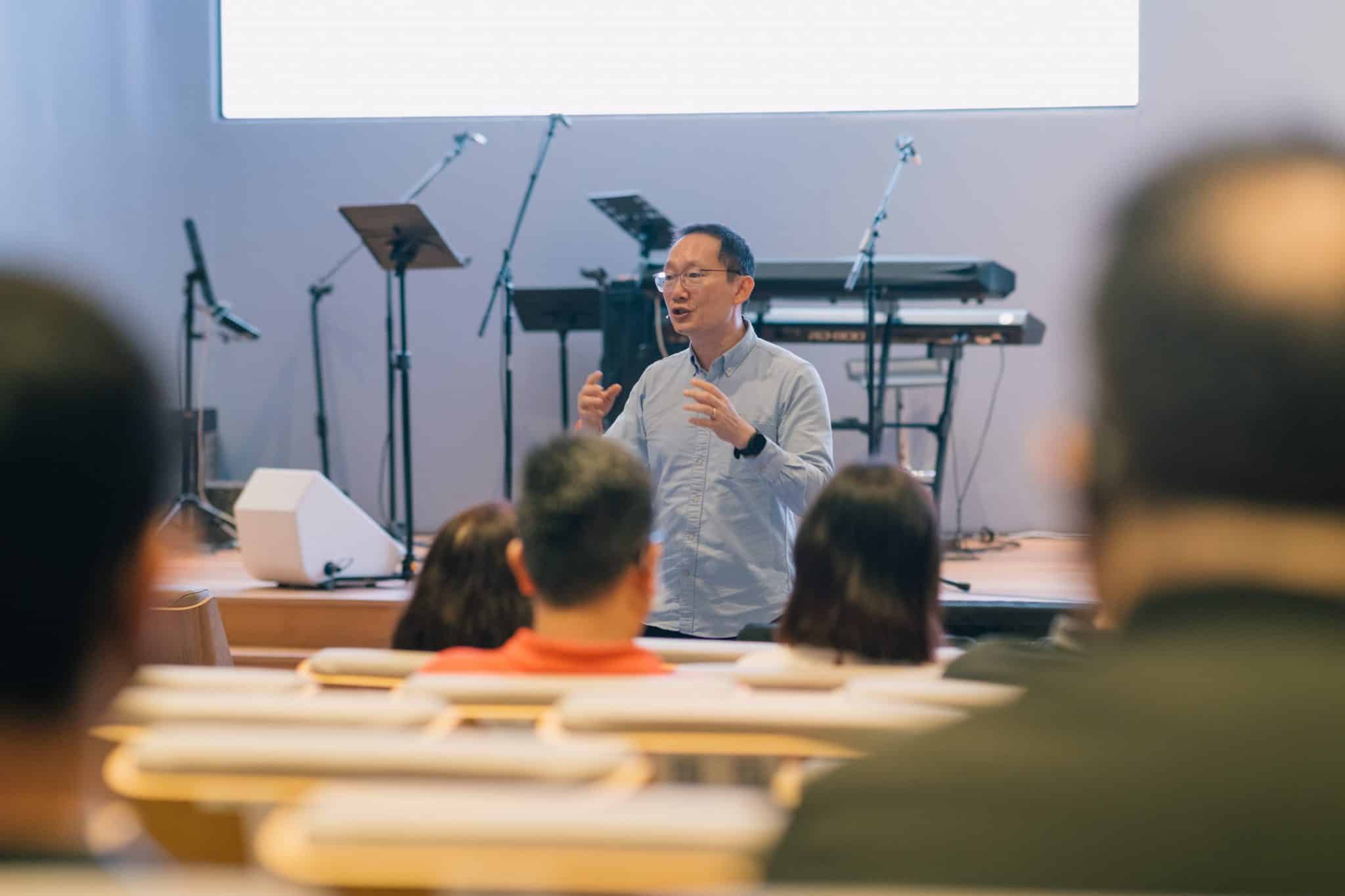3 Questions your church cannot ignore as it looks to the future
by Gracia Lee // July 18, 2022, 11:43 pm

How can the Singapore Church keep abreast of future trends so it remains effective in fulfilling its mission and call as a light for Christ in today's world? Photo by Sam Balye on Unsplash.
The world today is evolving faster than ever. Technologies are rapidly being developed. Social trends today look vastly different than it did five years ago.
How can the Singapore Church keep abreast of future trends so it remains effective in fulfilling its mission and call as a light for Christ in today’s world?
At the APCCS Lift Conference on 15 to 17 June, Pastor Lim Lip Yong, Executive Pastor of Cornerstone Community Church, shared three questions the church cannot ignore as it looks forward to the future.
1. How can we start thinking more digitally?
For our online services
Even though physical church services have resumed, Ps Lip Yong believes that the digital expression of church is here to stay.
“I guarantee you this: Every church will see a good number of people that will not be coming back for physical services, that will decide that they’re going to stay in the digital space,” he said.
“The digital format is a great way to cast the net, but it’s not a good way to pull the net in.”
How then can we continue to reach and disciple them effectively?
Noting that our online services are often just a broadcast of the physical services that are happening in church, he urged participants to think about how they can “fully capitalise” on the advantages of going digital – and perhaps even redesign what is broadcast.
“There are certain things that work in a congregation that just doesn’t work when you’re at home. But when you’re at home, there are certain things that really work well,” he said.
“There are different ways to do it, depending on how much resources and capacity that you have. You don’t particularly have to record a brand new service, but at least we are conscious of the fact that digitally it’s a completely different experience,” he added.
He also encouraged participants to embrace the advantages of digital services, even if it may feel uncomfortable for some.

At the APCCS Lift Conference on 15 to 17 June, Pastor Lim Lip Yong, Executive Pastor of Cornerstone Community Church, urged the Church to consider how to use evolving technologies to reach church congregants and disciple them effectively.
For example, one of the perks of online services is that it is on-demand. However, many pastors do not like the idea of their flock having a consumeristic mindset and tuning in to worship God as and when they want.
While Ps Lip Yong agreed that doing so is a bad habit, he added that there are other ways to deal with this discipleship issue. What we must not do, he urged, is to throw the baby out with the bath water.
“You cannot deny that being on-demand is one of the big advantages of going digital. In other words, a pastor may preach for half an hour on a Sunday morning and then he can rest for the rest of the week. But he continues to preach 24/7, non-stop, for as long as the video is up there,” he said.
“That’s a big advantage. How do we take advantage of that?”
Nevertheless, he acknowledged that going digital will surface some gaps. For example, how do we account for, pastor and disciple our virtual congregants?
“The digital format is a great way to cast the net, but it’s not a good way to pull the net in,” said Ps Lip Yong. “We need to find another way to pull the net in, and that’s where we need to think a little bit more.”
On social media
Urging church leaders to get on social media, Ps Lip Yong also highlighted its perks when using it for pastoral outreach.
Giving an example, he said he often stands at the door of the worship hall at the end of the services to shake hands, chat and pray with congregants as they leave.
“To get a little slice of what’s going on in the lives of every single person in your church, get onto social media.”
“That takes at least 10 minutes per person to pray sincerely, listen sincerely. If there’s a half an hour interval between services, how many people can you talk to? Three, that’s it,” he said.
In contrast, just a quick scroll on social media would provide a wealth of life updates, from Covid-19 diagnoses and birthdays to deaths in the family and even suicidal ideation.
“To get a little slice of what’s going on in the lives of every single person in your church, you know what’s the fastest way to do it? Get onto social media,” he said.
Apart from using social media to keep up with the lives of his members, he also uses it to communicate and connect with them.
A few days a week, he disciplines himself to spend an hour on social media, praying for those he comes across and sending them a personal direct message.
“I’ll write to them and say: ‘My condolences on this death. You graduated? Congratulations! You got a job yet? What are your plans? Can I pray for you?'” he shared, adding that if he there is a need for a follow-up, he will activate people to do so.
He added: “We have always ignored (using social media) because somehow we’ve vilified social media to a large extent, saying it’s full of rubbish … But the tool is neither good nor bad. It’s how the person uses it.”
2. How can we build stronger communities?
The pandemic has shown us the importance of small groups, and we need to think about how we can make these groups truly authentic and genuine communities, said Ps Lip Yong.
He added that to do this, we may need to dismantle some of the structures and systems that we have gotten used to over the decades, such as having a fixed programme.
“But the bottom line is people must experience genuine, real relationship and community.”
During small group meetings, we often have an agenda: Opening prayer, worship, Bible study, so on and so forth.
“In our social gatherings, there’s no such thing. So our small group meetings are not a reflection of real life. It’s quite different … But the bottom line is people must experience genuine, real relationship and community,” he said.
Ps Lip Yong also questioned if we should continue having our small group meetings on Friday nights, which is when most people go out to unwind and have fun together.
“In the whole Singapore all the non-Christians are hanging out, but not one Christian is there because they’re all attending their small group. We have taken the salt out of the world,” he said.
Another structure we may have gotten used to is having small groups that are permanent. But this may be a barrier to reaching out to new people, said Ps Lip Yong.
“People become deeply comfortable with what they are doing and then they become very settled and they don’t look outwards,” he elaborated.
In Church of the Highlands, a megachurch in the United States, people are grouped into cells based on topics like marriage, prayer, sharing your testimony or books of the Bible, he shared.
Each cell group meets together for a semester before people are regrouped again. While people can choose to remain in the same group if they wish to do so, new people are always welcome.
“Am I saying that our cell groups should be transient? No. I’m just saying that somebody has taught about this. We don’t have to follow them but I think it’s worth our time to think and consider,” said Ps Lip Yong.
3. How can we better serve the world?
During the pandemic, Ps Lip Yong made an eye-opening observation.
Many members who served in church could not serve as there was no physical church service. Ironically, at a time when more should be stepping up to serve a nation in crisis, fewer people were serving.
“If we are not in touch, when crises happen we don’t know where to serve, we don’t know where to channel help.”
Why? Because most were serving inside the church rather than outside of it.
“We did not make preparations to sink our knees into the community, to get plugged into the stakeholders in the our communities – whether it’s the grassroots leaders, the homes that are around us,” said Ps Lip Yong.
“If we are not in touch, when crises happen we don’t know where to serve, we don’t know where to channel help.”
It was a wake-up call that spurred him to shift his focus outwards.
“We need to find ways to get in touch with our parliamentarians, we need to get in touch with our social sector stakeholders in our community and we need to fire up and build relationships with people, so that they will call us when the need arises – and we will be ready to answer,” he said.
“If we didn’t do this well in this pandemic, don’t worry. There’s another opportunity coming up not too far away. Because if it’s not a pandemic, it will be something else.”
MORE FROM THE LIFT CONFERENCE:
“Listen better”: World Vision International’s Andrew Morley on reaching millennials
We are an independent, non-profit organisation that relies on the generosity of our readers, such as yourself, to continue serving the kingdom. Every dollar donated goes directly back into our editorial coverage.
Would you consider partnering with us in our kingdom work by supporting us financially, either as a one-off donation, or a recurring pledge?
Support Salt&Light



